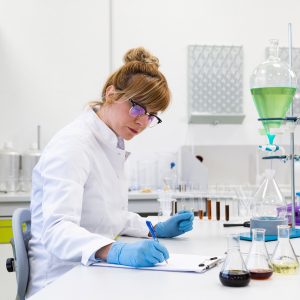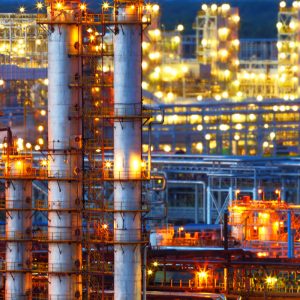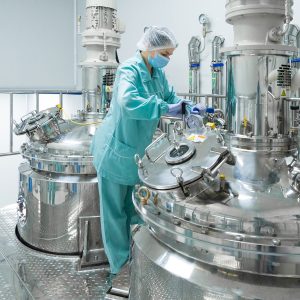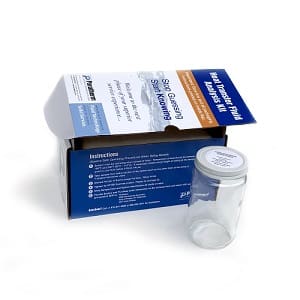Low Range HTF
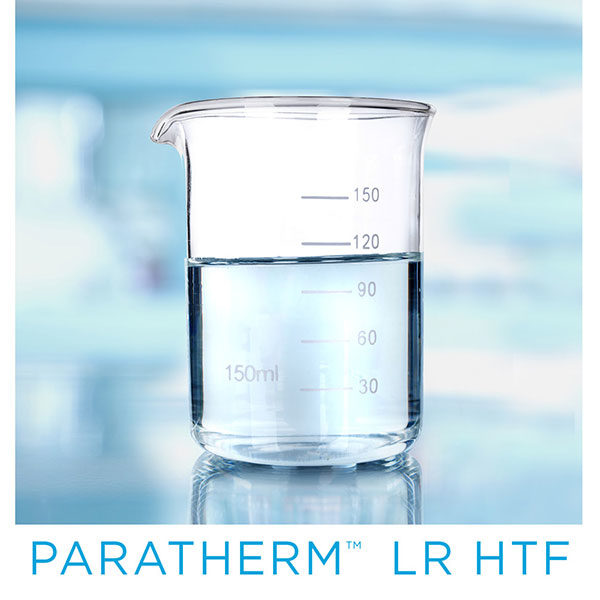
LR low range heat transfer fluid is an aliphatic-hydrocarbon based heat transfer fluid designed for use in closed-loop, liquid phase heating and cooling systems up to 450°F in electric and steam heaters and down to a -58°F surface temperature in direct-expansion exchangers. Registered HT-1 for incidental food contact by NSF
OPERATING RANGE
| Minimum Startup Temp (300cSt) | Maximum Operating Temp |
|---|---|
| -112°F / -80°C | 450°F / 232°C |
LR HTF FEATURES
- Premium NSF HT-1 heat transfer fluid
- Exceptional low temperature & dielectic properties
- Efficient alternative to glycols & silicones
APPLICATIONS INCLUDE
REDUCE PROCESS HAZARDS WHEN PROCESSING WATER-SENSITIVE PRODUCT
Many products undergo a violent exothermic reaction when exposed to water. Paratherm LR low range heat transfer fluid can be used safely for temperature control in these reactions because, unlike water/glycols, it’s not mixed with water. And because it contains no double bonds or bonded oxygen molecules, it’s extremely stable.
WIDER TEMPERATURE RANGE THAN GLYCOLS
Paratherm LR low range heat transfer fluid has higher heat-transfer coefficients than 50% ethylene-glycol and 50% propylene-glycol solutions below -22°F and -4°F respectively. And while glycol solutions have a maximum operating temperature of 320°F, Paratherm LR is completely stable up to it’s 450°F maximum operating temperature. Stability tests showed less than 3% degradation after 500 hours at 550°F.
TYPICAL PROPERTIES*
| Chemical Name | Paraffinic hydrocarbon |
| Appearance | Water White Liquid |
| Odor | Odorless |
| Maximum Recommended Film Temperature | 500°F/260°C |
| Maximum Recommended Operating Temperature | 450°F/232°C |
| Minimum Operating Temperature 20 cPs (20 mP-s) | -58°F/-50°C |
| Minimum Start-up Temperature 300 cPs (300 mP-s) | -112°F/-80°C |
| Viscosity at 60°F cSt (mm2 /sec) | 2.4 |
| Density at 60°F/15.5°C lb/gal (kg/m3 ) | 6.4 (766) |
| Flash Point Closed Cup (D56) | >130°F/54°C |
| Autoignition Temperature (maximum 10 sec ignition delay | >500°F/260°C |
| Boiling Point (14.7 psia/101 kPa) | 397°F/202°C |
| Vapor Pressure @ maximum operating temperature psia (kPa) | 21 (145) |
| % Volume expansion over recommended operating temperature per 100°F (°C) | 6.8 (12.2) |
| Average Molecular Weight | 160 |
| Dielectric Breakdown voltage D1816-04 (kV, 0.1″ gap) | 22.15 |
| Dielectric Constant (1 KHz) D924-04 | 2.03 |
| Dissipation Factor (1 KHz) D924-04 | 0.00001 |
| Volume Resistivity at 100V (?-cm) D257-07 | 1.84X1014 |
| Heat of combustion (approximate) BTU/lb (kJ/kg) | 20,000 (46,300) |
| Heat of vaporization (approximate) BTu/lb (kJ/kg) | 113 (262) |
* These are typical laboratory values, and are not guaranteed for all samples. ** Note: Normal practice is to size expansion tanks so that they are 1/4 to 1/3 full when the system is cold, and 2/3 to 3/4 full when the system is at the maximum normal operating temperature.
PARATHERM HEAT TRANSFER FLUIDS
[Formatted Table Goes Here]



